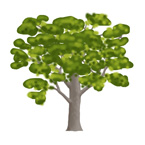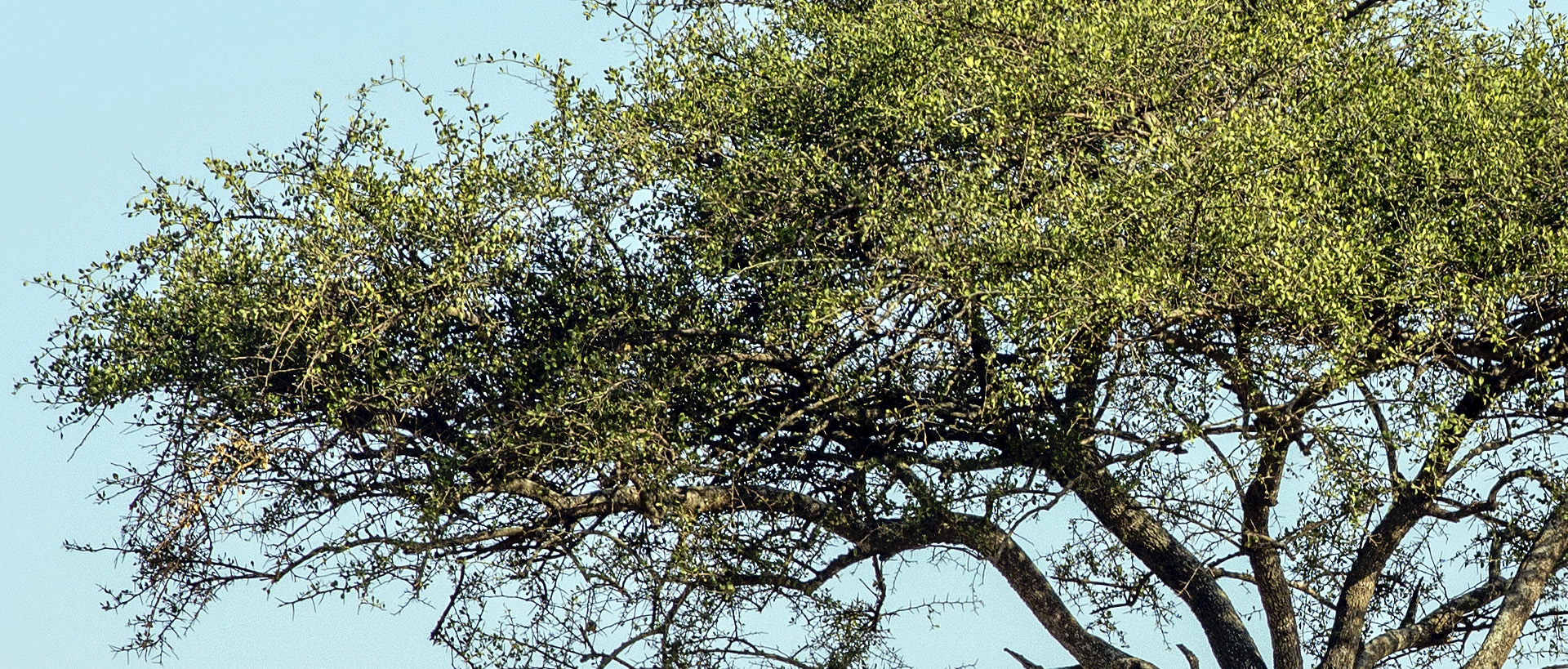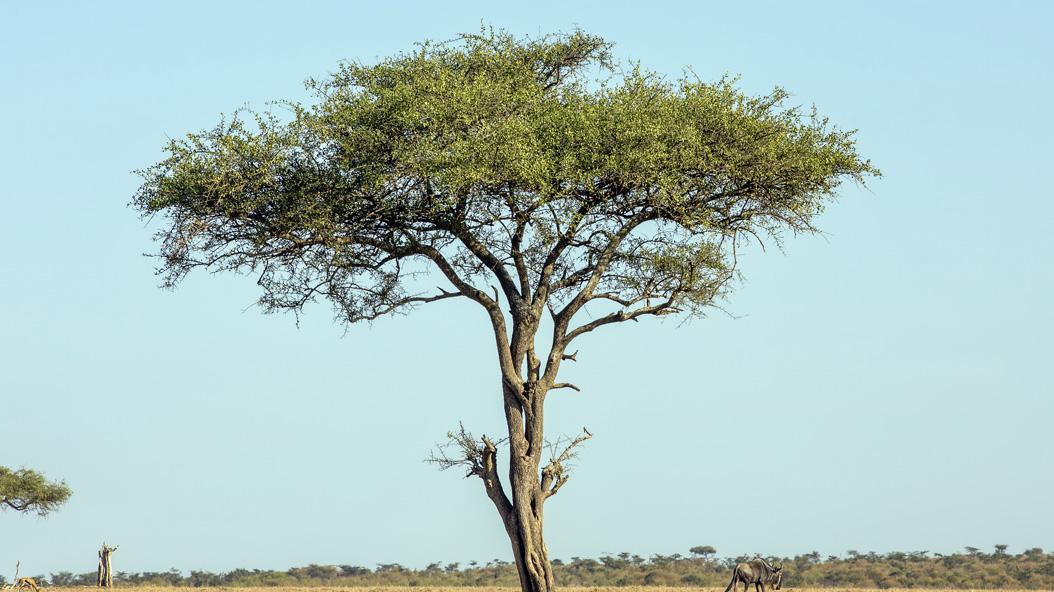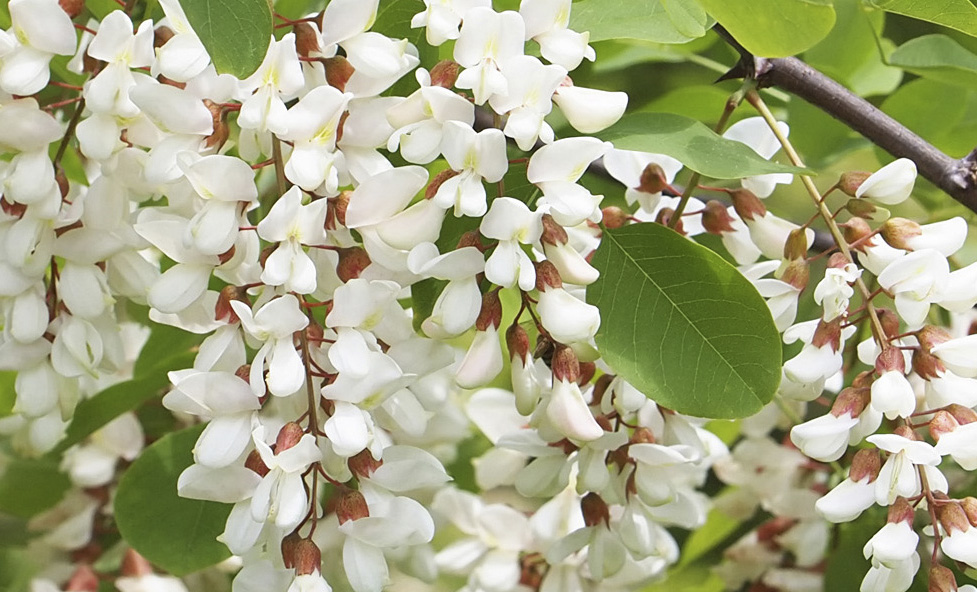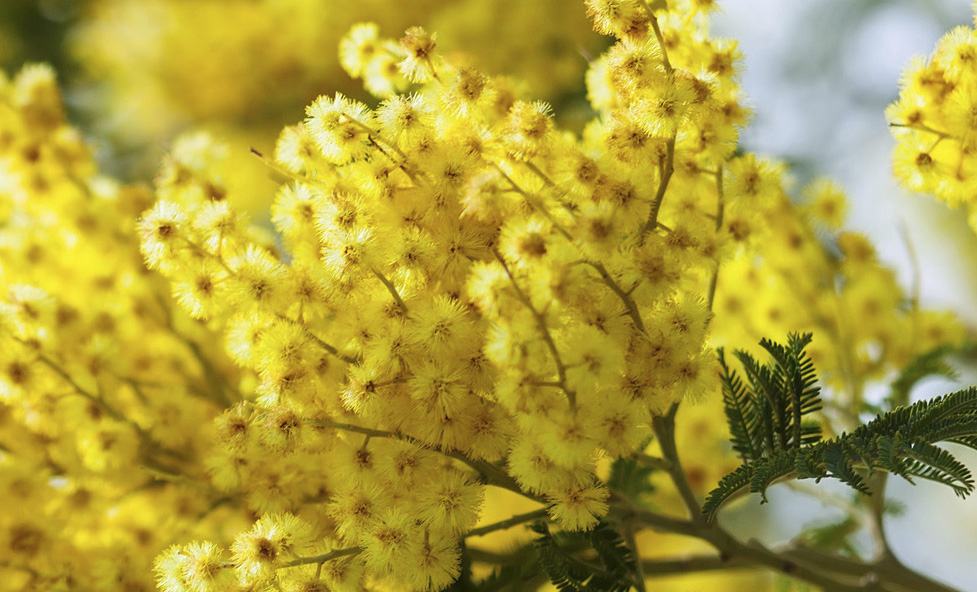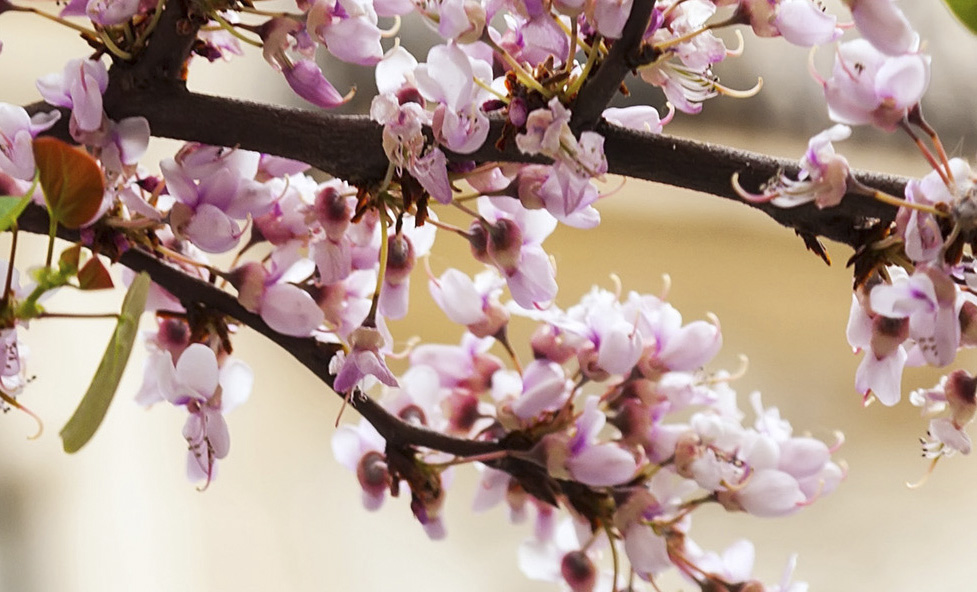Desert Date
Tree with spherical, flat or irregular crown up to 8-9m in height. Notable appearance with its flexible drooping branches, with alternate thorns arranged in a spiral shape. Bark. Smooth (young trees) that turn cracked and fissured, beige to blackish, with parts that range from beige to light brown. Stems. Glabrous, or semi glabrous, greenish to beige, with lenticels. Thorns. Straight, laid out along leaf axils, greenish beige, growing up to 8-10cm long. Leaves. Alternate, composite, bifoliate, 1-7cm long, growing from the base of the thorns. Elliptic, obovate, rhomboid leaflets, from 2.5-6cm long x 1.5-4cm wide, with an obtuse or emarginate pointed apex, cuneate or tapering base, the underside a matte greyish green. Petiolules from 1-4mm long. Nerves. Pinnate, with 5-9 pairs of barely prominent lateral nerves. Inflorescence. Small axillary raceme, formed by fascicules up to 3cm wide. Flower. Greenish yellow, on a pedicel 1cm long, with 5 petals and 5 sepals. Fruit. Ellipsoid shaped drupe 5cm long x 2.5cm wide, green and pubescent, which turns yellow and is glabrous when mature. A thin skin covers edible pulp around a hard stone, ovoid and pointed. Sprouting tree leaves. Flowering. Throughout almost the entire dry season. Habitat. Areas in the Sahel to Sudanese Sahel. Not very particular with regard to soil, and can grow in sandy, stony and heavy soils. Indicator of excessive grazing.
Natural habit
Dry and tropical Africa from Senegal to Sudan, East Africa from Egypt to Zambia, Arabia and India. Irregular distribution, locally common and gregarious.
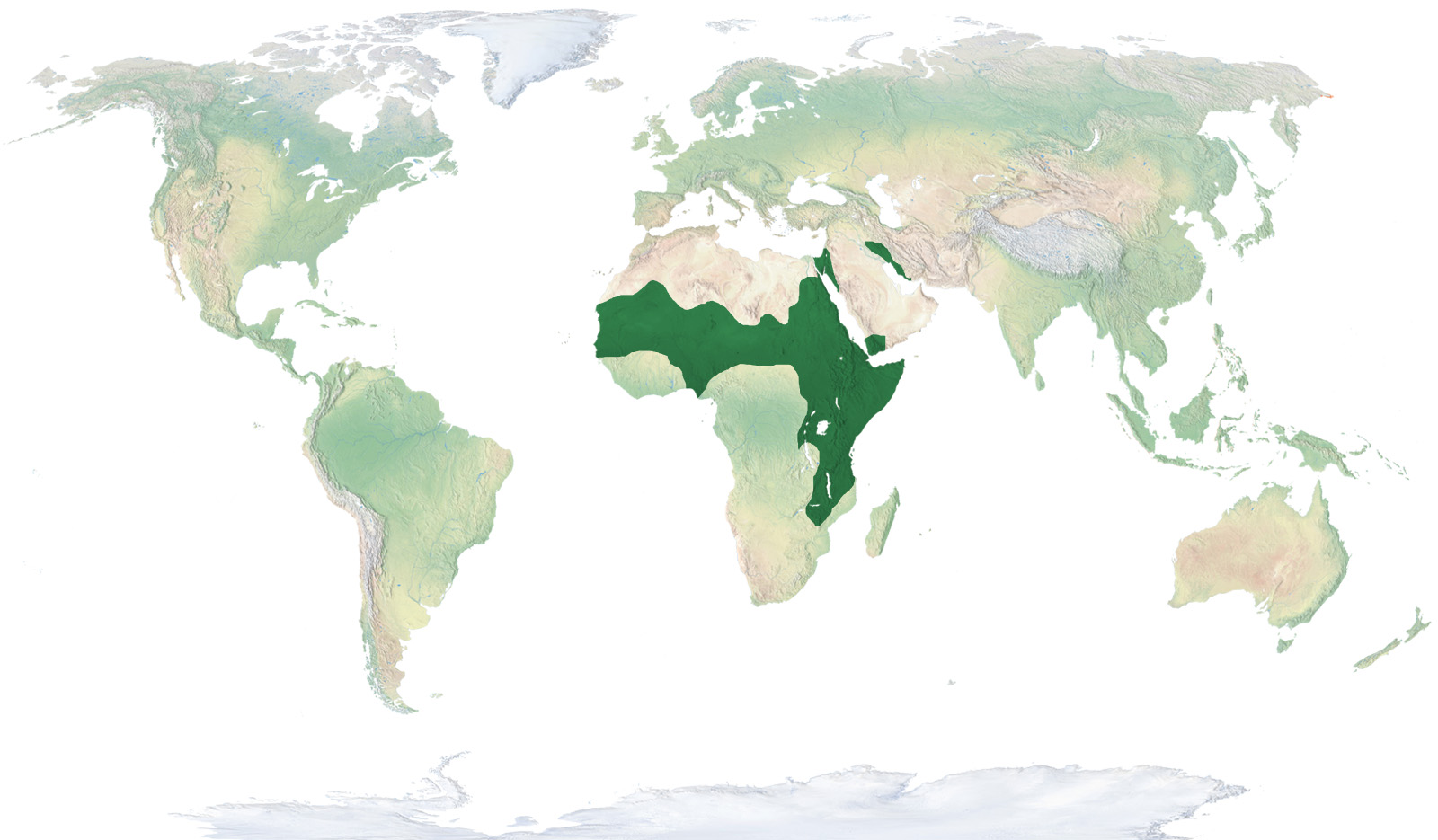
- Natural Habit
Classification
Growth Habit
